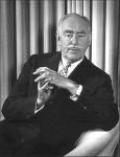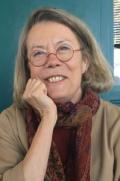Out of an agonizing American experience, the frail Scots author mined a treasure and carried it away with him
It’s more than just whimsy
Our hurricane-naming system evolved much the same way our baby-naming system did. Just as it’s easier to say “Jane Q.
There is something uniquely chilling about a natural disaster, the uncontrolled, unpreventable fury of normally benign elements: a blue sky now black exploding in water and electricity; the air around us sudd
How to get a drink or a meal or a night’s sleep before April 18, 1906
On the 100th anniversary of the 1906 calamity, a student of earthquakes seeks its traces in the city he loves most.
THIRTY YEARS AGO A HARD-FOUGHT gubernatorial campaign heralded the third great political upheaval of our century
IT WAS A FUNERAL TO REMEMBER. The rain had been pelting for hours when the mourners gathered in St.
The Thirteenth Amendment outlawed slavery in 1865, but right on into this century sailors were routinely drugged, beaten, and kidnapped to man America’s mighty merchant marine
William Davis, a cabinet-maker, left his home near Great Salt Lake in the Utah Territory in the mid-1870s and headed for Northern California, a fast-growing region where he hoped to earn up to six dollars a day by adapting his expertise to ship carpentry.
The nation’s first transcontinental motor route can still be experienced in all its obsolescent charm.
I had been driving across Pennsylvania’s hills and valleys for five hours when suddenly my destination for the evening appeared ahead.
The United States Army has always been secretive about its defense installations. In the summer of 1864 a breach of security took place on the tiny island fortress of Alcatraz that reverberated all the way back to the War Department in Washington.
The urge to move documents as fast as possible has always been a national pre-occupation, because it has always been a necessity. Fax and Federal Express are just the latest among many innovations for getting the message across.
Reaching out and touching someone hasn’t always been easy—especially if it was necessary to hand that person something in the process.
New Yorkers recall 1939 as the year of the great World’s Fair in Flushing Meadow. But that’s just more Eastern provincialism. Take a look at what was going on in San Francisco.
A newspaper article the other day informed me that the late 1930s are back in fashion. Historical societies are girding to protect Art Deco. The clarinet of Benny Goodman is heard on compact discs.
No city has more energetically obliterated the remnants of its past. And yet no city has a greater sense of its history.
On the edge of a pond a few blocks from my home, there is a knee-high chunk of granite with a bronze plate on one side, marking the spot where a band of Spanish soldiers commanded by a captain named Juan Bautista de Anza pitched camp on a March afternoon in 1
From Fort Ticonderoga to the Plaza Hotel, from Appomattox Courthouse to Bugsy Siegel’s weird rose garden in Las Vegas, the present-day scene is enriched by knowledge of the American past
Magnificently impractical and obsolete almost as soon as they were built, the cable lines briefly dominated urban transportation throughout the country
Beloved of San Franciscans for more than a century now, the sturdy cable cars cling tenaciously to the hills of their birth.
A pioneer locomotive builder used pen and ink, watercolor, and near-total recall to re-create the birth of a titanic enterprise
TOWARD THE END of his life, in the 1880s, David Matthew could go across the bay from his San Francisco home and see the long transcontinental trains rolling into Oakland.
California has always been as much a state of mind as a geographical entity. For the better part of two centuries, artists have been defining its splendid promise.
BEFORE THE DISCOVERY of gold at Sutler’s mill in 1848, the population of California was too small and too scattered to produce much painting.
We built a merchant marine despite the opposition of the Royal Navy, went on to develop the most beautiful of all sailing ships, and held our supremacy for years. But how do we measure up today?
AMERICA is in the midst of a revival of interest in things nautical—nineteenth-century nautical.
An all-but-forgotten San Francisco photographer has left us a grand and terrible record of the destruction and rebirth of an American city
For more than a century, the august members of this San Francisco body have enjoyed a unique, all-male midsummer night’s dream
At first it was a men’s club of the meanest stripe—a sparsely furnished, stogie-scented parlor on the second story of a red-brick office block, across the alley from an undertaker’s morgue, within the sonic radius of a two-bit music hall.
Westward with the course of empire Colonel Jonathan Drake Stevenson took his way in 1846. With him went the denizens of New York’s Tammany wards, oyster cellars, and gin mills—the future leaders of California.
During November of 1896 the United States experienced its first publicized UFO flap, and it is perhaps not surprising that it should have occurred in California.
This is the story of a sturdy American symbol which has now-spread throughout most of the world. The symbol is not the dollar. It is not even Coca-Cola.
For hoboes, the West was the land of milk and honey, of adventure, scenery, and easy living. A “land stowaway” hopped the first transcontinental train, and for six more decades they rode the rails
When young Jack London described the Reno of 1892 as “filled with … a vast and hungry horde of hoboes,” he was reporting no isolated phenomenon; shaggy, rootless men—tramps or hoboes—could be seen in every part of the West from the 1870’s down to the Second W
As Lincoln lay dying from an assassin’s bullet across the street from Ford’s Theatre through the grim night of April 14, 1865, frequent bulletins on his sinking condition clicked between the major American cities along the country’s spreading web of Morse tel
One day San Franciscans suddenly learned that their city was the property of a Frenchman, one Monsieur Limantour
For several years after the California gold rush San Francisco was notorious around the world for the frequency and magnificence of its municipal disasters. Time and again, devastating fires swept through the business district.
The wrecker’s ball swings in every city in the land, and memorable edifices of all kinds are coming down at a steady clip.
There are places on this earth, in Europe particularly, where conservation is taken to mean the preservation of the notable works of man as well as nature.
Curiosity motivated the first American who crossed Siberia. But he also made a handsome profit.
Granddaddy of all desert mining discoveries was the Comstock Lode, which sent the Far West on a silver stampede to Nevada’s Washoe country a century ago.
A corrupt lawyer and his complaisant ally ran San Francisco as their private preserve until a crusading editor toppled their plots and schemes, and sent one of them to jail
In November, 1901, the little town of Sonoma, California, a few miles north of San Francisco, lay dreaming in the haze of Indian summer. There were few guests in the town hotel, and only two were strangers. One of them was a small man with bright, beady eyes above a huge mustache; he looked like Ren Turpin with his eyes uncrossed. The other was big and broad-shouldered; he had a head of thick, curly black hair and a luxuriant mustache and Vandyke beard that, in pictures of him, give an irrepressible impression of being glued on.





